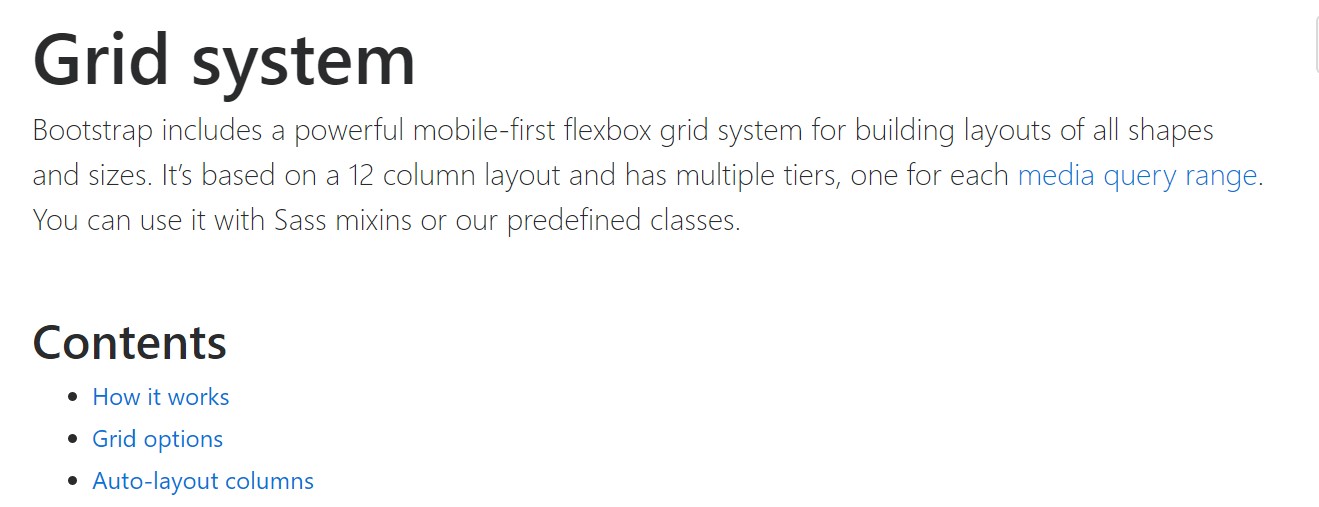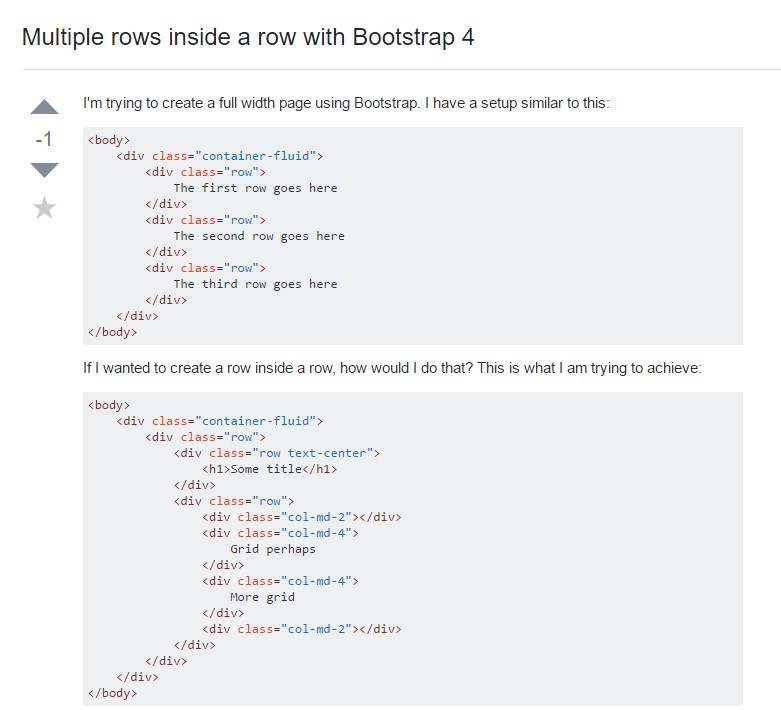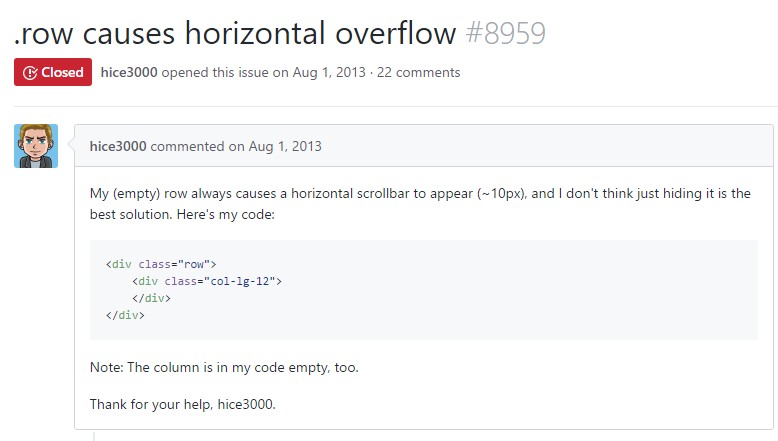Bootstrap Row Table
Intro
Just what do responsive frameworks do-- they provide us with a practical and functioning grid environment to put out the content, ensuring if we determine it appropriate so it will function and display appropriately on any sort of device no matter the proportions of its display. And just like in the construction each framework including some of the most favored one in its most current version-- the Bootstrap 4 framework-- feature simply a couple of primary components that provided and incorporated correctly have the ability to assist you design almost any appealing look to match your layout and sight.
In Bootstrap, normally, the grid setup becomes designed by three main elements that you have most probably previously met around looking into the code of certain webpages-- these are the
.container.container-fluid.row.col-In the case that you're pretty new to this entire thing and at times may ask yourself which was the proper method these three needs to be installed within your markup right here is a simple method-- all you must remember is CRC-- this abbreviation comes regarding Container-- Row-- Column. And due to the fact that you'll shortly adapt seeing the columns acting as the inner element it is actually not vary likely you would definitely mistake what the primary and the last C means. ( visit this link)
Several words relating to the grid system in Bootstrap 4:
Bootstrap's grid system employs a set of columns, containers, and rows to design and fix material. It's constructed having flexbox and is perfectly responsive. Listed here is an illustration and an in-depth review precisely how the grid comes together.
The above situation creates three equal-width columns on little, normal, large size, and extra sizable devices utilizing our predefined grid classes. Those columns are focused in the webpage having the parent
.containerHere is likely how it operates:
- Containers provide a means to center your internet site's elements. Employ
.container.container-fluid- Rows are horizontal groups of columns that assure your columns are certainly arranged effectively. We work with the negative margin method with regards to
.row- Content should really be inserted in columns, also just columns may be immediate children of Bootstrap Row Inline.
- Due to flexbox, grid columns without having a set width is going to by default format using identical widths. For example, four instances of
.col-sm- Column classes signify the amount of columns you need to use from the potential 12 per row. { In such manner, assuming that you really want three equal-width columns, you are able to use
.col-sm-4- Column
widths- Columns feature horizontal
paddingmarginpadding.no-gutters.row- There are 5 grid tiers, one for each responsive breakpoint: all breakpoints (extra small-sized), small, normal, huge, and extra large.
- Grid tiers are formed on minimum widths, meaning they put on that tier and all those above it (e.g.,
.col-sm-4- You can employ predefined grid classes as well as Sass mixins for extra semantic markup.
Understand the issues and defects about flexbox, such as the lack of ability to apply certain HTML elements as flex containers.
Though the Containers grant us fixed in max width or else extending from edge to edge horizontal space on screen with slight practical paddings around and the columns give the means to distributing the display screen space horizontally-- once again with certain paddings about the real web content granting it a space to inhale we are simply intending to direct our interest to the Bootstrap Row feature and all the amazing solutions we can utilize it for styling, fixing and distributing its components working with the brilliant brand-new to alpha 6 flexbox utilities which are in fact some classes to include to the
.row-sm--md-Steps to make use of the Bootstrap Row Class:
Flexbox utilities may possibly be employed for setting up the structure of the elements placed inside a
.row.flex-row.flex-row-reverse.flex-column.flex-column-reverseHere is the way the grid tiers infixes get utilized-- for example to stack the
.row.flex-lg-column.flex-Together with the flexbox utilities applied to a
.row.justify-content-start.justify-content-end.justify-content-center.justify-content between.justify-content-aroundThis counts likewise to the upright positioning that in Bootstrap 4 flexbox utilities has been actually addressed as
.align-.align-items-start.row.align-items-end.align-items-centerA different opportunities are coordinating the items by their base lines being straightened the class is
.align-items-baseline.align-items-stretchAll of the flexbox utilities stated thus far sustain separate grid tiers infixes-- fit them right prior to the very last word of the equivalent classes-- just like
.align-items-sm-stretch.justify-content-md-betweenFinal thoughts
Here is simply exactly how this crucial yet at very first look not so adjustable component-- the
.rowLook at several video clip training about Bootstrap Row:
Linked topics:
Bootstrap 4 Grid system: main records

Multiple rows inside a row with Bootstrap 4

One more issue: .row
causes horizontal overflow
.row
